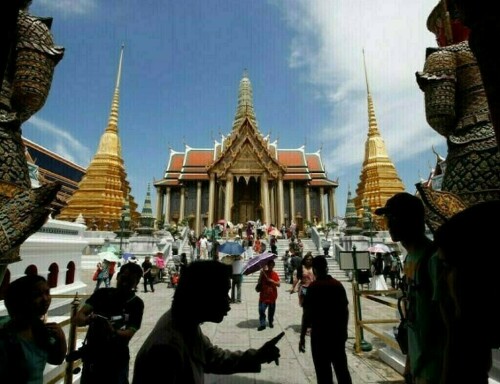Bank of Thailand Reduces Key Interest Rate Again
Thailand’s central bank implemented a widely anticipated quarter-point reduction to its primary interest rate for the second consecutive time on Wednesday. This move is intended to bolster the nation’s economy, which is currently underperforming and experiencing increased strain due to substantial tariffs imposed by the United States.
The Monetary Policy Committee of the Bank of Thailand (BOT) voted by a margin of 5-2 to lower the one-day repurchase rate by 25 basis points, setting it at 1.75%, a two-year low. This decision mirrors a similar rate cut made during the committee’s prior meeting in February.
The central bank has adjusted its economic growth forecast for 2025 downward to 2.0%. This revision considers the ongoing trade discussions and the anticipation that U.S. tariffs will remain near their present levels. The previous forecasts were slightly above 2.5% in February and 2.9% in December.
The BOT cautioned that growth faces potential risks and that U.S. tariffs could exert a greater negative influence later in the year. Should the trade conflict intensify and tariffs escalate, growth could potentially decrease to just 1.3% this year.
Thailand is among the Southeast Asian countries most affected by the policies enacted by U.S. President Donald Trump, potentially encountering a significantly higher tariff of 36% if an agreement cannot be reached before a U.S. moratorium concludes in July.
The central bank’s baseline forecast for growth next year is 1.8%, while a more pessimistic scenario projects growth at only 1%.
In a released statement, the bank conveyed that, “U.S. trade policies and potential retaliatory measures from major global economies are poised to bring about noteworthy changes to the economic, financial, and trade landscape on a global scale.”
The statement continued, “This process is only in its initial stages and remains subject to substantial uncertainty, with the global economy expected to expand at a reduced rate. The situation is expected to be prolonged.”
Sakkapop Panyanukul, Assistant Governor, communicated during a press briefing that there is still some, but limited, monetary policy flexibility to assist the economy.
He stated, “The monetary policy stance has undergone a shift. We are presently in an easing phase.”
“Our outlook has become less optimistic, and we are aware of the existing risks. Consequently, the monetary policy stance is set to be more accommodating,” he further added.
He also indicated the possibility of the economy entering a technical recession. The subsequent rate meeting has been scheduled for June 25.
A ‘technical recession’ is generally defined as two successive quarters showing a decline in economic growth.
As the second-largest economy in Southeast Asia, Thailand has been underperforming compared to its regional counterparts for several years, with a growth rate of only 2.5% in the past year.
Inflation and Tourism Projections Revised Downward
Out of 28 economists surveyed in a poll, 20 correctly predicted the key rate reduction this week. The remaining eight economists had anticipated no change in policy.
The central bank also affirmed its intention to closely monitor the baht currency, which experienced a rise of 0.4% following the rate decision, while the primary stock index increased by 2%. Despite concerns about trade and weak economic demand, the baht has appreciated by almost 3% so far this year due to the weakening U.S. dollar.
Reflecting escalating risks, the BOT has adjusted its headline inflation forecast for 2025 downward to 0.5%, a decrease from the 1.1% projected in December and falling below its target range of 1% to 3%. The forecast for core inflation this year is 0.9%, compared to the earlier projection of 1.0%.
The BOT also lowered its export growth forecast for the current year to 0.8%, a reduction from the previous estimate of 2.7%.
The central bank has revised its projections for international tourist arrivals—a crucial driver of growth—to 37.5 million this year, down from the 39.5 million projected in December.
Miguel Chanco, an economist at Pantheon Macroeconomics, remarked, “We anticipate that today’s easing measure will be the last for the foreseeable future, as the MPC (Monetary Policy Committee) is likely to adopt a wait-and-see approach with respect to the continuous tariff uncertainty.”



Comments (0)
No comments yet. Be the first to comment!
Leave a Comment